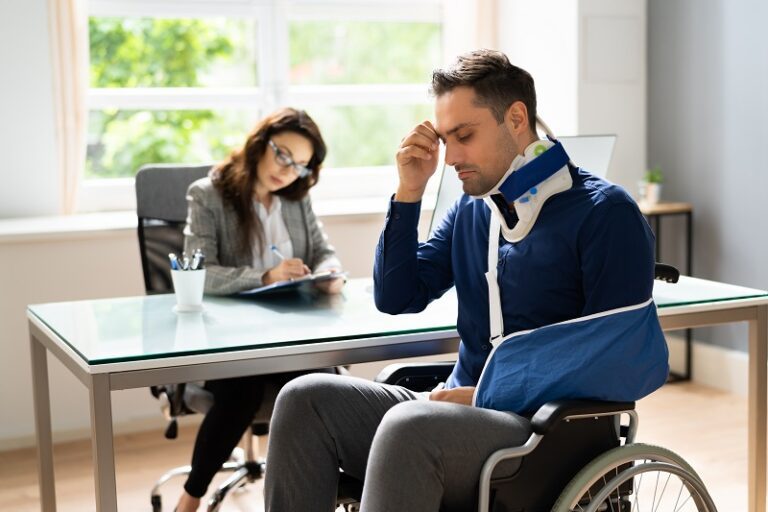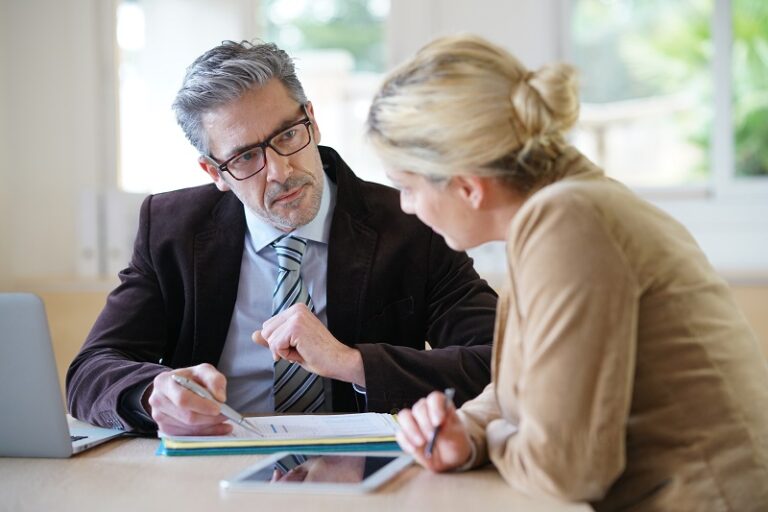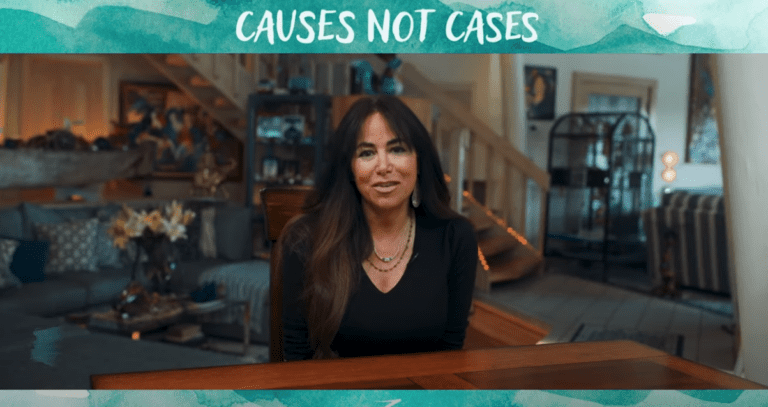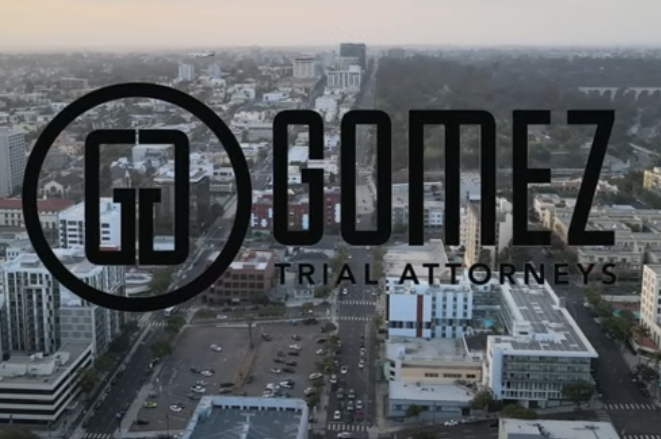The National Highway Traffic Safety Administration (NHTSA) estimates that more than 700 people die in bicycle crashes on roads across the United States each year. Thousands suffer injuries, some of which are debilitating and lead to permanent disability. Fortunately, bicycle accident fatalities have declined over the last few years from a high of 852 deaths in 2016. On the other hand, the number of cyclists injured in severe traffic accidents has been on the rise since 2009, making bicycle safety a top priority for many cities and bicycle enthusiasts.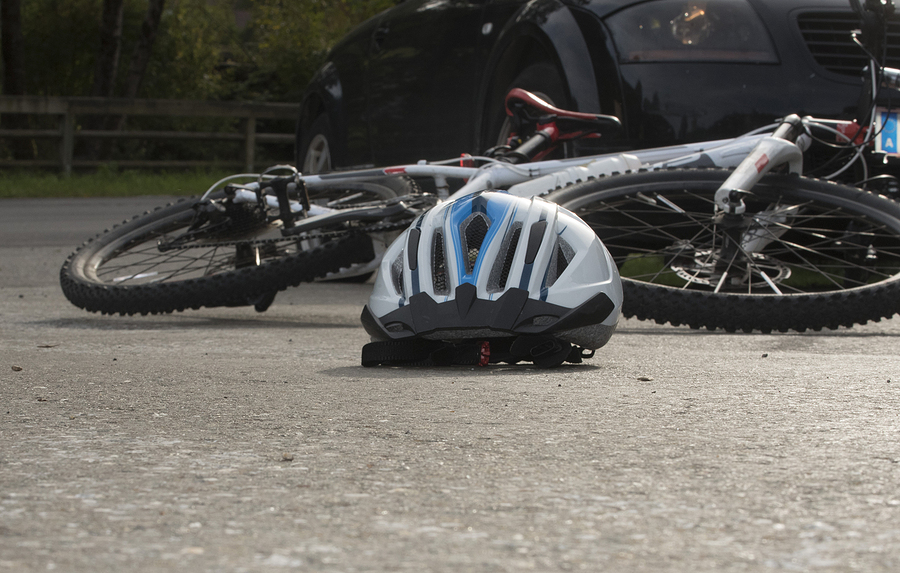
These alarming statistics do not stop people from enjoying time on their bikes. Learning to ride a bicycle is a notable milestone and rite of passage for many children. Cycling provides exercise and stress relief for kids and adults alike when they ride for leisure. Some adults rely on a bicycle as their primary mode of transportation, especially in bike-friendly areas.
Regardless of whether a community is bikeable, accidents still occur. We provide this guide to educate you about the most common bicycle accidents. Armed with an understanding of types of bike accidents and how they occur allows you to avoid falling victim to one. We also provide bicycle safety information so you can share the road safely with motorists. Finally, if you suffer injuries in a bike accident or your child gets hurt in a bike accident, the law permits you to seek compensation for damages against the party allegedly at fault for injuries. Below, we provide more information about the steps you need to take after a bike accident.
Collisions With Vehicles
According to the NHTSA, the most common bicycle accidents fall under one of two major categories: collisions or falls. Collisions with cars, trucks, and other motorized vehicles occur most often and typically lead to the worst injuries. Traffic crashes involving vehicles and bicycles are also more likely to result in a fatality, especially when the person on the bicycle is a child. Below we offer more information about driver behaviors that lead to a vehicle striking a cyclist and specific accidents that occur when a bicycle and a vehicle collide.
Negligent Motorists Strike Innocent Cyclists
Although cyclists have a legal obligation to follow the rules of the road and obey many of the same traffic laws required by cars, those in motor vehicles have an elevated duty to take special care and caution when bikes are on the road. Careless and negligent drivers who violate traffic laws put cyclists at risk for accidents, injuries, and sometimes death.
Examples of poor choices behind the wheel that could lead to a dangerous bicycle accident include:
Distracted driving. Cell phone use is the most common driving distraction. Even though almost every state prohibits drivers from using their phones with their hands while driving, many still choose to text and drive. For example, the California Department of Motor Vehicles reports that drivers between ages 16 and 24 are more inclined to use their cell phones when driving, even though state law bans all cell phone use for drivers under age 18. The NHTSA reports that almost 75 percent of drivers between 18 and 20 admit to texting and driving.
One glance at a phone can prevent a driver from seeing a cyclist before it’s too late. On average, those who text and drive take their eyes off the road for about five seconds. If you are driving 55 miles per hour, your vehicle travels the length of a football field in five seconds.
Unfortunately, cellphones are not the only distractions drivers face.
Other examples include:
- Brushing hair, putting on make-up, and other personal grooming;
- Adjusting vehicle features such as the radio, seats, or A/C;
- Reaching on the floor or in the backseat for dropped items;
- Having heated discussions or arguments with passengers;
- Eating food or drinking beverages while driving;
- Programming a GPS;
- Watching another event outside the vehicle; and
- Daydreaming.
Drunk/drugged driving. Drivers who get behind the wheel after consuming alcohol or using drugs put everyone on the road, including cyclists, at risk for accident and injury. Drugs and alcohol impair a driver’s ability to process the information they see when they are driving. Impaired drivers simply do not have the same capacity to judge distance and time as they do when they are sober.
Even if a driver, who is impaired by a controlled substance, sees a child or adult on a bicycle, he or she can’t always react appropriately to avoid a collision.
Speeding/aggressive driving. Motorists who drive too fast for weather, road, or traffic conditions risk striking a cyclist and causing severe injuries. Similarly, aggressive drivers who weave in and out of traffic put those on bicycles at risk. Speeding and aggressive driving make it difficult to control a vehicle, especially when sharing the road with others. Even when speeding is not the direct cause of a bicycle accident, it often leads to more severe injuries that are more likely to be fatal.
Left Hook Bicycle Accidents
Left hook bike accidents are the most common type of accident that occurs between vehicles and bicycles. A left hook bicycle accident happens when a vehicle turning left does not slow or stop for a cyclist in oncoming traffic. The driver directly hits the cyclist or during a left turn, the cyclist collides with the front passenger side of the vehicle.
Drivers who cause a left hook accident try to blame the cyclist and claim he or she was riding too fast and came out of nowhere. Drivers also sometimes state they never saw the cyclist. It’s likely the cyclist was not riding over the speed limit and was visible when approaching an intersection. Yet, inattentive drivers sometimes miss those on bicycles because they are distracted, looking for other motor vehicle traffic, or not watching for cyclists and pedestrians.
To avoid a left hook accident as a cyclist, never assume that a vehicle turning left from oncoming traffic can see you or your bike. If you wait to make eye contact with the driver, it might be too late to avoid the accident. If, however, the driver sees you and waves you through the intersection, go ahead. This will not happen in most cases.
Even though you have the right-of-way, you should drive defensively and plan to slow down your bike or stop and let the vehicle make a turn. It will interrupt a smooth ride, but giving up your right of way to an inattentive or impaired driver could save your life.
[lwptoc]
Right Hook Bicycle Accidents
Right hook accidents are another common type of bicycle accidents that happen when vehicles and bicycles collide. Right hook bicycle accidents are especially dangerous because cyclists often do not have the time to react and avoid the collision. A right hook accident occurs when a vehicle and bicycle are riding in the same lane. The motorist makes a right turn directly into the path of the bicycle without checking blind spots or using a turn signal.
These accidents, as well as others, are entirely preventable. In many cases, the driver passes the cyclist on the left and sees the bicycle, but still turns in front of them. Right hook accidents are often a result of inattentive or careless driving. The driver sees the cyclist but is more concerned about other motor vehicles that might be approaching from the left. Even when a cyclist sees a vehicle cut them off, he or she still might not have enough time or space to brake without running into the vehicle. In other cases, the motorist sometimes turns directly into the bicycle, leading to severe, sometimes fatal, injuries.
T-Bone Bicycle Accidents
A T-bone accident occurs when a cyclist runs directly into a vehicle or vice versa. The motorist or the cyclist fails to yield to any cross traffic when pulling out of a driveway or cross the street, or they do not follow traffic control devices at a controlled intersection. For example, a driver who fails to stop at a crosswalk where pedestrians and cyclists cross traffic risks perpendicularly striking a bicycle and causing a T-bone accident.
You can avoid dangerous and deadly T-bone accidents by stopping, looking, and waiting as long as necessary before you enter the flow of traffic. Take care to prevent your children from darting into traffic when they are learning to ride a bicycle. Many cyclists cause T-bone accidents, but situations do occur when a motorist could be responsible for the accident. In these cases, distracted, drunk, or drowsy driving might be involved.
Intersections Put Cyclists at Risk for Accident and Injury
The statistics vary among organizations and agencies that study bicycle accidents, but somewhere between 50 and 75 percent of all bicycle accidents involving a motorized vehicle occur at intersections. This includes controlled intersections with stop signs and stop lights, as well as uncontrolled intersections, driveways, and other junctions where bike paths and vehicle paths meet.
Accidents, like those mentioned above, often occur because the motorist or the cyclist did not follow right-of-way rules. Most states consider bicycles as vehicles to the extent that cyclists must follow the same traffic regulations as those driving a car, truck, motorcycle, or scooter.
If you approach an uncontrolled intersection without traffic signals at close to the same time as a motorist, whoever arrived first has the right-of-way. The same is true if you approach an intersection with stop signs. If you arrive at the same time at an uncontrolled intersection or an intersection with stop signs, whoever is to the right has the right-of-way. The intersection of a major street and a minor street is the exception to this rule; traffic on the minor street must yield the right-of-way to traffic on the major street.
Intersections that are controlled by traffic signals are more straightforward. The signal determines the right-of-way. Sometimes sensors do not detect a bicycle, which means you need to move your bike closer to sensors in the road, wait for safe crossing against the like, or cross at the crosswalk with your bicycle. Always assume motorists do not see you at an intersection and ride your bicycle defensively to avoid accidents.
Bicycle Falls
Falling from a bicycle is the other common broad category of bicycle falls. Bicycle falls are especially common among young children who are still developing their balance and cycling skills. Regardless of the cause, cyclists who fall from their bicycles can incur serious injuries. Falls that occur in heavy traffic also put cyclists at risk for a motorist running them over and causing severe injuries. Below we expand on two main causes of bicycle falls:
Bicycle Rider Error
Cyclists sometimes make critical errors or engage in behaviors that lead to dangerous bike accidents.
Examples of common cycling mistakes that might result in an accident include:
- Poor seat adjustment making it difficult to control the bike;
- Going on long bike rides without the proper energy stores or hydration;
- Braking on a corner instead of slowing and breaking before the turn, causing a cyclist to lose control of their bike;
- Braking too hard, especially applying too much front brake which locks up the bike; and
- Poor bicycle maintenance, resulting in a mechanical error or a tire blowout which could lead to a dangerous crash.
Poor Road Conditions
States, counties, and cities have a responsibility to fix known issues with roads including depressions, potholes, and sinkholes. These irregularities can cause a cyclist to fall when one or both of their tires go over an area. In some cases, a cyclist can avoid these dangerous conditions and avoid an accident. When poor road conditions are unavoidable in areas where cyclists travel, an accident is inevitable. Sometimes, poor road conditions also include malfunctioning traffic control devices. Broken traffic signals can also lead to a severe bicycle accident that likely also involves a motor vehicle.
Fixed Object Collisions
Cyclists do not have fixed object collisions very often, but they can happen. Distractions, aggressive motorists, and mechanical failures are only a few examples of things that can lead to a fixed object collision. Cyclists can run into signs, poles, mailboxes, fire hydrants, parked cars, and just about anything else you can think of that might be on the side of the road. Road construction work zones with signs, barriers, cones, and other obstacles used to control traffic also pose a risk to cyclists for a fixed object collision.
Road Hazard Collisions
Hazards in the middle of a road or bike path also sometimes lead to dangerous bicycle accidents. Animals typically are the most common road hazards. Cyclists cannot always avoid anything that runs, slithers, or crawls in the middle of the road. Although it does not happen frequently, trucks with unsecured cargo that spill their load can also cause an accident for cyclists. Other dangerous road hazards that can lead to a bicycle accident include trash, debris, blown car and truck tires, and car parts. Like fixed objects, cyclists sometimes avoid road hazards, but not always. The faster a cyclist is traveling and the heavier the traffic, the more difficult it is to avoid things lying in the middle of the road.
Common Bicycle Accident Injuries
Those riding bicycles simply do not have the same protection during an accident as drivers and occupants in cars and trucks. Collisions sometimes lead to severe, catastrophic, and fatal injuries that have long-term physical, emotional, and financial consequences for accident victims and their families.
Some common bicycle accident injuries include:
Traumatic Brain Injuries
If a cyclist gets thrown from a bicycle during a collision, he or she risks suffering a traumatic brain injury (“TBI”). The impact of the head hitting the ground or road can damage the brain. Brain injuries sometimes lead to permanent brain damage that affects a person’s memory, cognition, senses, personality, and a variety of other functions. Children who suffer TBIs in bicycle accidents risk permanent brain damage that impacts their growth and development.
Soft-Tissue Injuries
Cyclists who get in an accident risk a wide range of soft-tissue injuries. The body’s soft tissues include muscles, tendons, and ligaments. Injured bicyclists might suffer from a strain, more commonly referred to as a pulled muscle, or a sprain. Sprains occur when an accident stretches tendons or ligaments beyond their normal range of motion.
Most sprains and strains heal within a few weeks after proper rest. The most severe soft-tissue injuries occur when a cyclist tears a muscle, ligament, or tendon. A soft-tissue tear typically requires corrective surgery and sometimes leads to lifelong complications if doctors cannot completely repair the injury.
Fractured Bones
A bicycle accident sometimes leads to one or more broken bones. A simple break is not always a life-changing injury. After spending weeks in a cast, many simple breaks heal completely, especially in younger cyclists whose bones grow quickly. Unfortunately, when a vehicle strikes a child or an adult who is riding their bicycle, multiple fractures can occur.
Some bicycle accident victims suffer from crushed bones depending on the circumstances of their accident. Severe breaks can lead to one or more corrective surgeries that sometimes require doctors to insert screws, steel plates, and other items to repair the injury. Even after surgery, those who suffer severe fractures sometimes must cope with lifelong issues, such as chronic pain and arthritis.
Dislocations
Severe bicycle accidents sometimes contort a cyclist’s body in such a way that he or she suffers a dislocation of their shoulder(s) and/or hip(s). A dislocation occurs when the ball-and-socket joints of a hip or shoulder separate. In the shoulder joint, the upper arm separates from the collarbone; in the hip joint, the upper leg separates from the pelvis.
Dislocations are notoriously painful when they occur, and just as painful when doctors put the joints back together. Sometimes soft-tissue injuries, such as torn ligaments, accompany a dislocation. If a dislocation injury also injures nerves and blood vessels, bicycle accident victims risk long-term issues and permanent disability.
Back Injuries
Bicycle accidents, especially those that occur at high speeds, sometimes lead to back injuries. Cyclists who suffer severe back injuries often face chronic lifelong pain and discomfort, even after surgery. Painful back injuries, such as fractured vertebrae, herniated discs, and ruptured discs, make it difficult, sometimes impossible, for accident victims to find comfort whether sitting, standing, or lying down.
Pain management typically plays a large role in the life of someone who suffers a back injury. Depending on the exact type of injury, doctors might prescribe cortisone shots or highly-addictive painkillers, or choose to implant a pain management device to help back injury victims cope with their pain.
Spinal Cord Injuries
A spinal cord injury is a type of back injury, but it deserves special treatment. Bruised spinal cords and swelling near the spinal cord can cause temporary loss of bodily functions, which often return once the swelling subsides and bruises heal. More severe spinal cord injuries usually lead to permanent damage because spinal cord cells do not regenerate and scar tissue forms in their place. Those who suffer a severe injury to their spinal cord often have a grim prognosis and must cope with permanent loss.
The extent of functional loss after a spinal cord injury depends on the location of the injury along the spinal column. The spinal cord carries messages from the brain to the rest of the nervous system. Spinal cord injuries in the neck are close to the brain, so they block messages to the rest of the body resulting in full-body paralysis, medically referred to as tetraplegia. As the location of a spinal cord injury moves down the spinal column, a bicycle accident victim experiences less functional loss.
Bicycle Safety for Kids and Adults
Whether riding your bicycle for leisure or as your primary form of transportation, you cannot control the actions of others with whom you share the road. You can, however, follow safety guidelines to help you avoid a bicycle accident and keep your children safe from bicycle accidents. The National Highway Traffic Safety Administration (NHTSA) suggests the following bicycle safety practices:
Wear a Helmet
It’s enjoyable to feel the wind blow through your hair when you are cruising around on your bicycle, but it does not outweigh the potential costs of not wearing a helmet. Not only can wearing a bicycle helmet save your life in the event of an accident, but helmets also lessen the severity or entirely prevent traumatic brain injuries. In most states, the law requires minor children to wear a helmet, but not adults.
Wear Proper Clothing and Footwear
Sandals and flip-flops sometimes catch in a bicycle’s chain or the spoke of a wheel. The interruption can cause a fall or a collision depending on the surroundings. You should always wear proper footwear that allows you to pedal without problems. If you wear shoes with laces, make sure to tuck your laces, so they do not get caught in your bicycle. Wearing the right clothing is also a must, especially at night. Cyclists should always wear bright-colored clothing during daytime hours and reflective gear at night to ensure drivers see them.
Ride Your Bicycle Defensively
You should always assume that drivers in cars, trucks, and other vehicles cannot see you. Take the extra time to cross traffic even when you have the right-of-way. You should also ensure you have ample space between your bicycle and motor vehicles if you are sharing a road with cars and trucks. Finally, look at what’s ahead to avoid hazards in the road, grates, potholes, train tracks, and other things which could cause you to lose control of your bicycle.
Maintain Your Bicycle
Not only should you make sure your bike fits you correctly, but you need to maintain your bike, so you don’t run into any issues they might lead to an accident. Most importantly, you need to make sure your brakes work correctly so you can slow and stop when necessary. You should also maintain your tires by keeping the proper amount of air in them and replacing them when they become worn. Finally, make sure you have reflectors and lights on your bike if you intend to ride at night.
Follow All Traffic Regulations
The law generally treats bicycles the same as motor vehicles. Always follow traffic control devices and use hand signals to show your intention to stop or turn. This greatly increases the chance that a driver will see you, which can help you avoid accidents and injuries. Always opt for a bike trail or path dedicated to pedestrians and cyclists when possible. These pathways are typically safer than sharing the road with motorists.
What to Do if You Get in a Bicycle Accident
If you suffer serious injuries in a bicycle accident, it is likely an ambulance will transport you to the nearest emergency room for treatment. If a negligent driver caused your accident, the law permits you to seek compensation for damages related to your injuries.

Your health and safety come first, but you should also follow as many of these tips as possible to preserve the value of your claim after a bicycle accident:
- Seek medical treatment immediately if you did not go to the hospital via ambulance.
- Gather information at the scene of the accident, including the driver’s name, contact information, and insurance information.
- Take photos or videos of damage to your bicycle and any visible injuries you suffer.
- Report the accident to the police if they do not automatically show up at the scene of the accident.
- File a claim with the alleged at-fault driver’s insurance company.
- Keep all receipts and medical bills to document financial losses from your bicycle accident.
- Record the process of recovery and the impact your injuries have made on your life in a journal to document non-economic losses.
- Do not post personal details or any information about the accident while your claim is under investigation.
- Avoid discussing your claim with friends and family, who might accidentally say something that an insurance adjuster could use to devalue your claim.
Consult a Bicycle Accident Attorney to Recover Compensation for Your Injuries
When a driver causes a bicycle accident that leads to your injuries, you should not have to suffer the financial consequences of your injuries on top of the physical pain and psychological stress you must endure. An experienced bicycle accident attorney can guide you through the claims process and file a bicycle accident lawsuit against the driver on your behalf.
If you reach a settlement agreement with the insurance carrier or the jury awards you damages if you go to trial, you might receive compensation for the following losses related to your bicycle accident injuries:
- Medical treatment costs including ambulance service, emergency room visit, doctor visits, surgery, hospitalization, X-rays, diagnostic lab tests, prescriptions, and travel expenses to and from the doctor;
- Rehabilitation and recovery expenses such as specialized treatment with a physical therapist, occupational therapist, and/or mental health professional;
- Estimated future medical expenses in severe cases;
- Lost income for missing work as a result of your bicycle accident injuries;
- Estimated future lost income in severe cases;
- Pain and suffering;
- Emotional distress;
- Decreased quality of life;
- Loss of consortium with a spouse;
- Scarring and disfigurement; and
- Punitive damages, in rare cases that involve intentional harm or malice.
Riding a bicycle is a favorite pastime for kids and adults alike. It does come with some risk, but you can help reduce risk by following safety precautions that will help you avoid accidents. If, however, a driver causes an accident, contact a skilled bicycle accident attorney as soon as possible to advocate for you and fight for your best possible outcome for compensation you deserve.
Gomez Trial Attorneys
655 West Broadway, Suite 1700
San Diego, Ca 92101
619-237-3490


